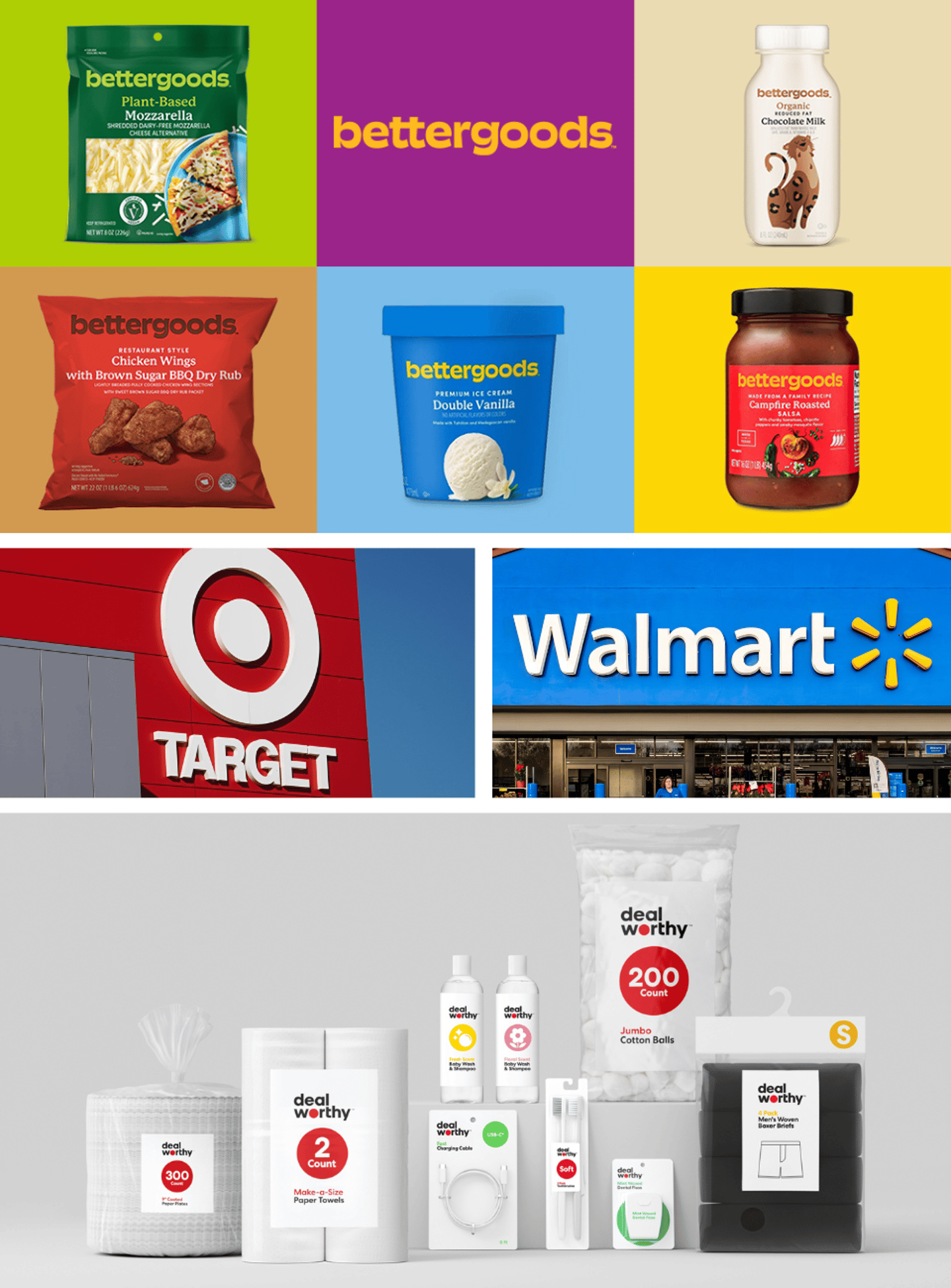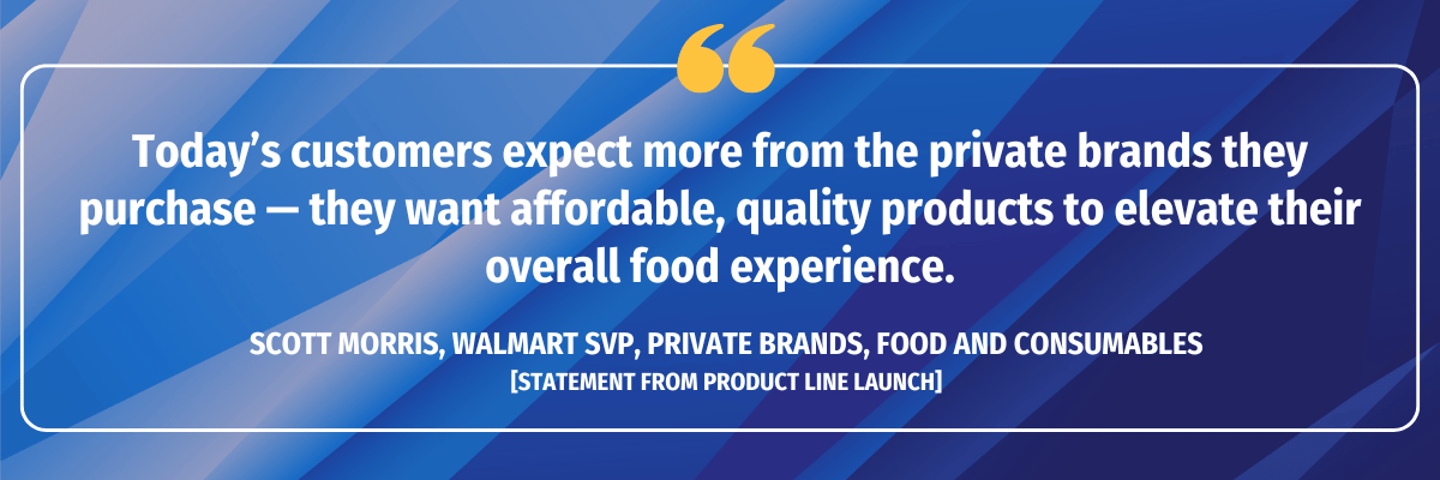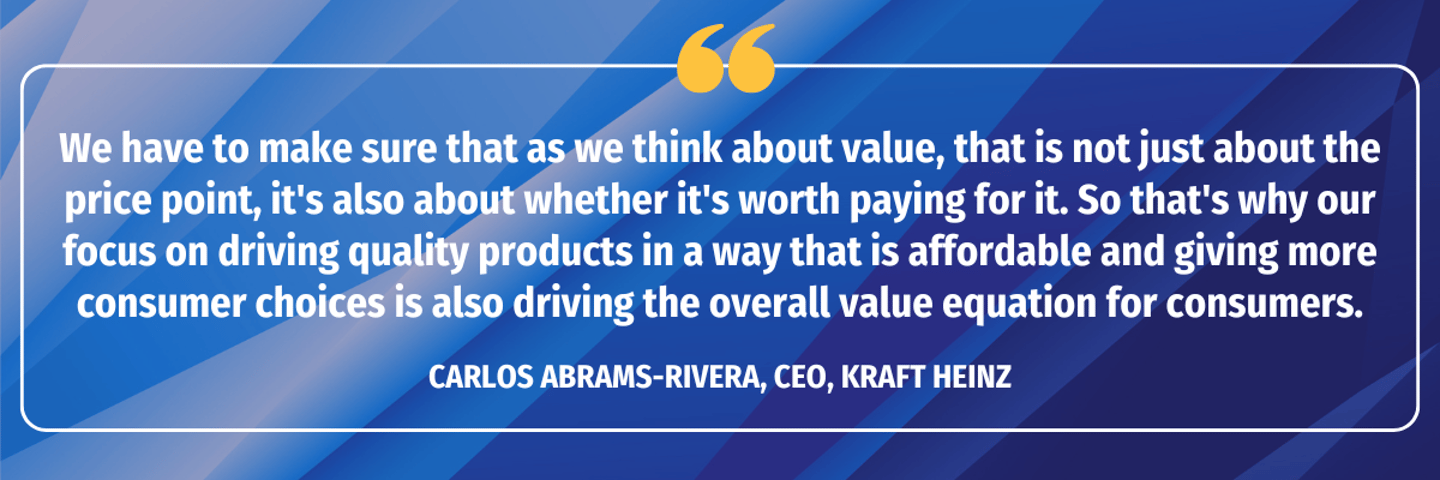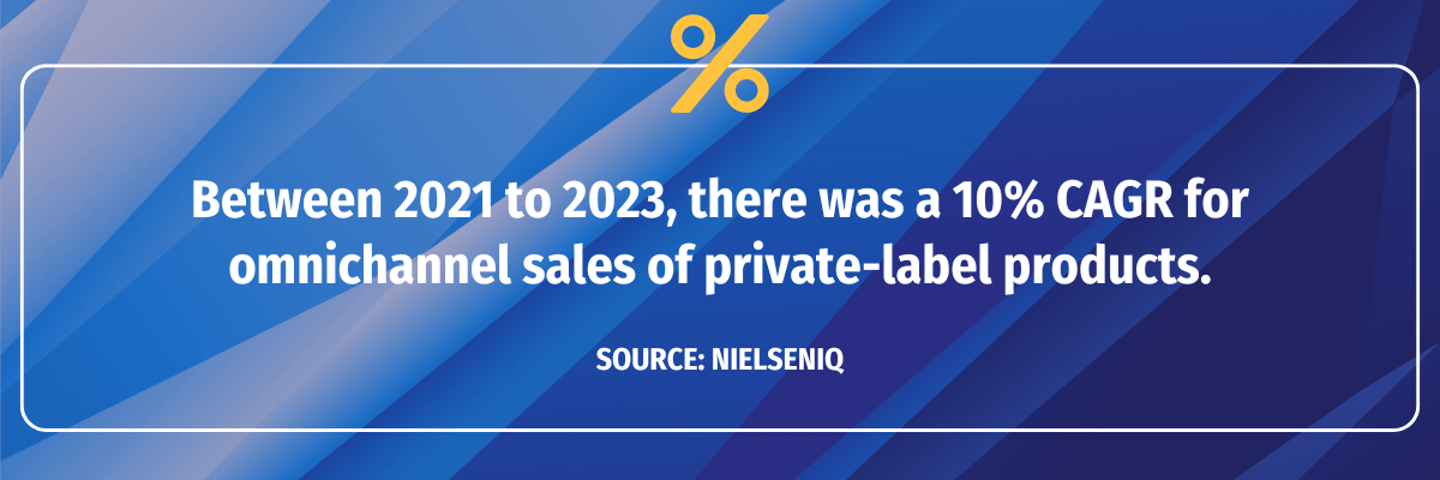CPGs Pull Pricing and Promotion Levers Amid Private Label Expansion
Cost of living pressures and earlier CPG manufacturing slowdowns drove an increase in consumer brand switching. In response, retailers have embraced owned-brand expansions, and consumer goods manufacturers are pivoting their merchandising and marketing strategies to compete and recapture shopper loyalty.
“Brands are trying to think more strategically for mutual benefit since the retailer owns the real estate,” MaryEllen Lynch, principal for center store solutions at Circana, tells CGT. “We’re at an inflection point here where private brands and value brands are continuing to expand their footprint, resulting in brands needing to look beyond standard conventional ways to retain their consumer.”
Companies like Kraft Heinz, General Mills, Nestlé, and Helen of Troy are just a few examples of consumer goods manufacturers that have implemented targeted consumer strategies to help flip the value narrative and restore brand loyalty.
The Private Label Landscape
Private-label brand sales increased 6% year-over-year in the U.S. to $217 billion in 2023, per Circana. In fact, 53% of retailers expect private label to be their No. 1 growth driver in 2024, according to NielsenIQ.
Major retailers like Walmart, Target, and CVS have launched recent private label efforts. In April, Walmart released its Bettergoods line — its largest private brand food initiative in 20 years with a portfolio of 300 items that range in price from under $2 to under $15 across the frozen, dairy, snacks, beverages, pasta, soups, coffee, and chocolate categories.
Earlier in the year, Target introduced Dealworthy, which includes a portfolio of 400 basics across apparel and accessories, essentials and beauty, electronics, and home items. Target’s owned brand strategy also allows consumers to return these items within one year (with a receipt) for a full refund or exchange. The company stated that its owned-brands strategy has accounted for more than $30 billion in sales annually.
“Private brands have been growing in high inflationary times as retailers adapt strategies to expand the opportunity that may have started with just a low price anchor on the shelf,” says Lynch. “Beyond basic value, there is now more premiumization occurring in products to support retailer differentiation while still retaining that value-oriented standing in the face of expanding value channels.”
As an example of how even more premium private-label brands might be construed as more valuable than their CPG counterparts, CVS launched a private-label brand, Well Market, that seemingly caters more to the health and wellness crowd rather than the value shopper. The 40 products across the snacks, beverages, and groceries categories are nutrition-focused and are available in CVS Pharmacy stores nationwide and on CVS.com.
Brands Look at Pricing and Promotions
There’s been a mass movement toward more value-minded approaches among CPGs in response to this competitive marketplace as 27% of consumers are opting for private label to save on shopping costs, per NielsenIQ. This has included portfolio optimization and being more strategic around pricing, promotion, and discount strategies.
The Kraft Heinz Company has focused on portfolio optimization to maintain its value in the marketplace. During the latest earnings call, CEO Carlos Abrams-Rivera said the company has renovated almost 100% of its portfolio in the U.S. so it stays relevant and delivers value to the consumer.
Nestlé is looking to spark consumer interest by stepping up its marketing and promotions and introducing a pipeline of new products. Meanwhile, Helen of Troy will increase distribution, marketing, and customization efforts to better meet a softer consumer.
General Mills CEO Jeff Harmening said not only is the company putting a 20% increase on coupon spend to entice consumers, but it is also introducing a renewed focus on the iconic Pillsbury Doughboy. “We’re bringing the Doughboy back after a few years. Private-label — they don't have a Doughboy, we do,” stated Harmening on an earnings call last week.
CPGs have had to ask themselves what the right promotion or discount is to win back consumers while still supporting retailers’ needs, says Lynch.
With some discounts and promotion strategies not quite hitting the mark with consumers, she says manufacturers are revisiting their price and promotion playbooks to support their own brand’s growth within the complementary shelf dynamic.
Jim Doucette, consumer and retail sector leader at EY-Parthenon, recently warned that economic disruption historically brings private label share increases, and branded manufacturers are at risk of losing consumers forever if they don’t get pricing right compared to private label products in the same category.
Getting More Granular With Brand Leverage
The trend toward retailer-owned brands doesn’t seem to be slowing. NielsenIQ found that private label growth currently exceeds national, branded product growth (both online and in-store).
Therefore, behavioral analytics will play a key role in the private vs. brand landscape to help manufacturers differentiate their offerings. CPGs need to be vigilant with this data to better understand consumer sentiment, says Lynch. This is particularly important as it relates to demographic breakdowns in shopper trends.
Gen Z-ers, for example, are driving the private label trend, with 67% believing private label products are just as good as national brands, according to NielsenIQ.
“Boomers may have more discretionary funds, but the younger generations are more experiential,” said Lynch, noting the importance of having demographics-led data to inform pricing and promotion strategies. “Brands also really need to understand the behaviors of large cohorts of single households and also growing multi-generational households, each of which have unique needs.”






